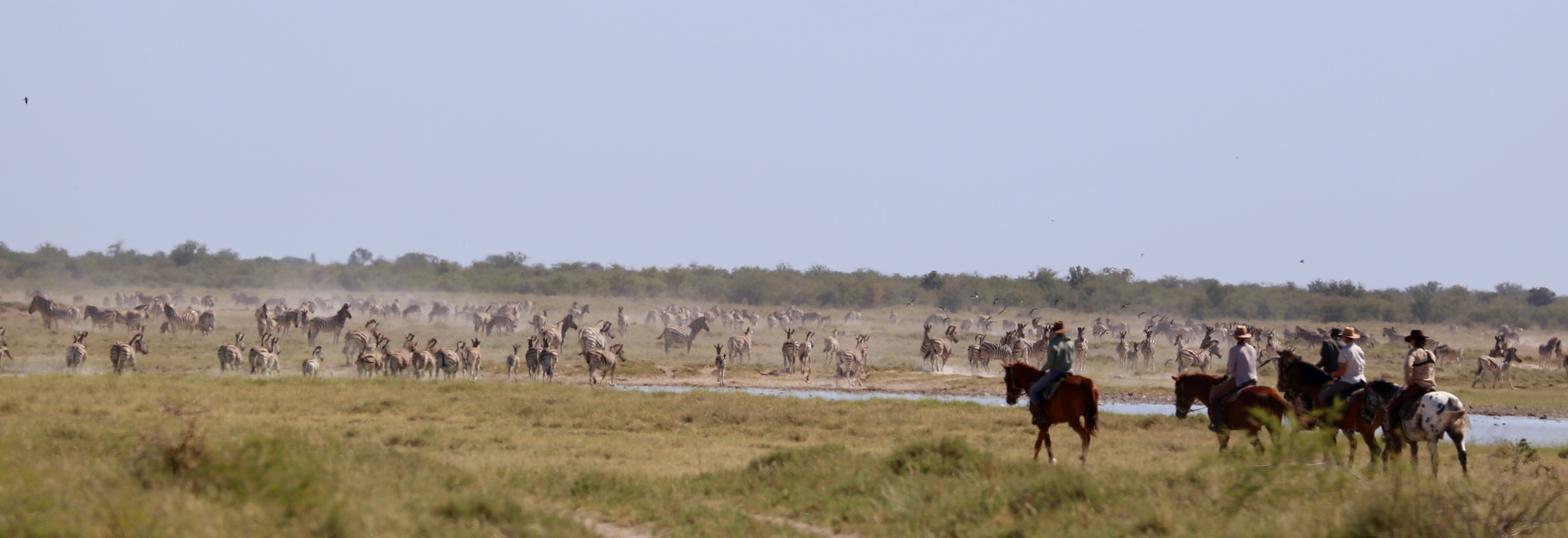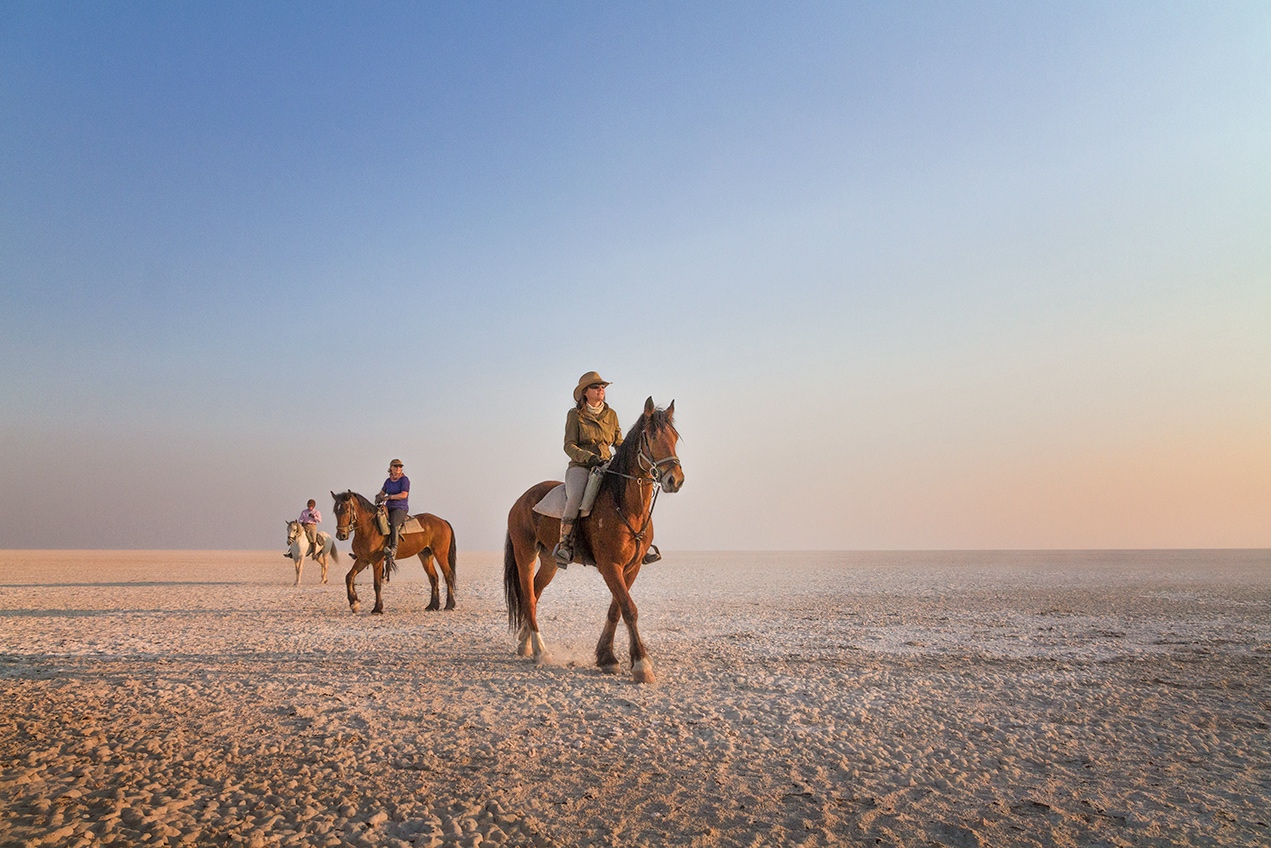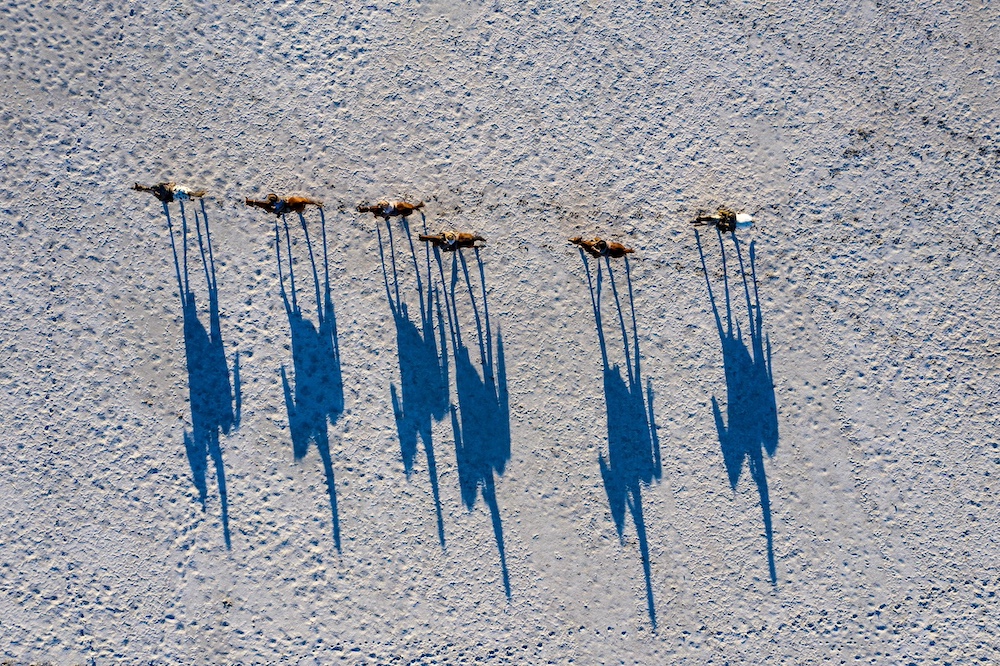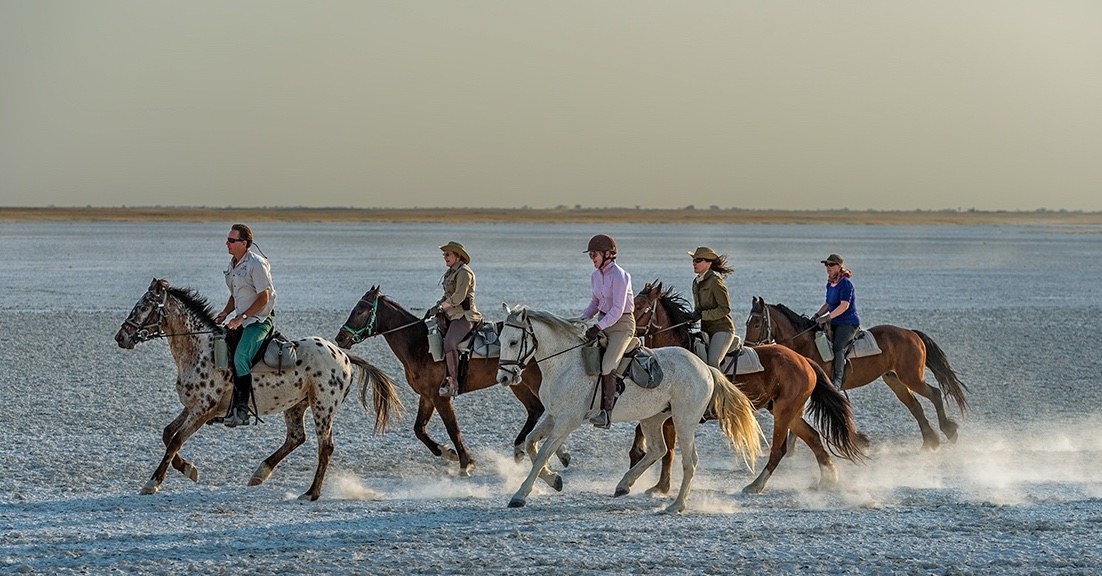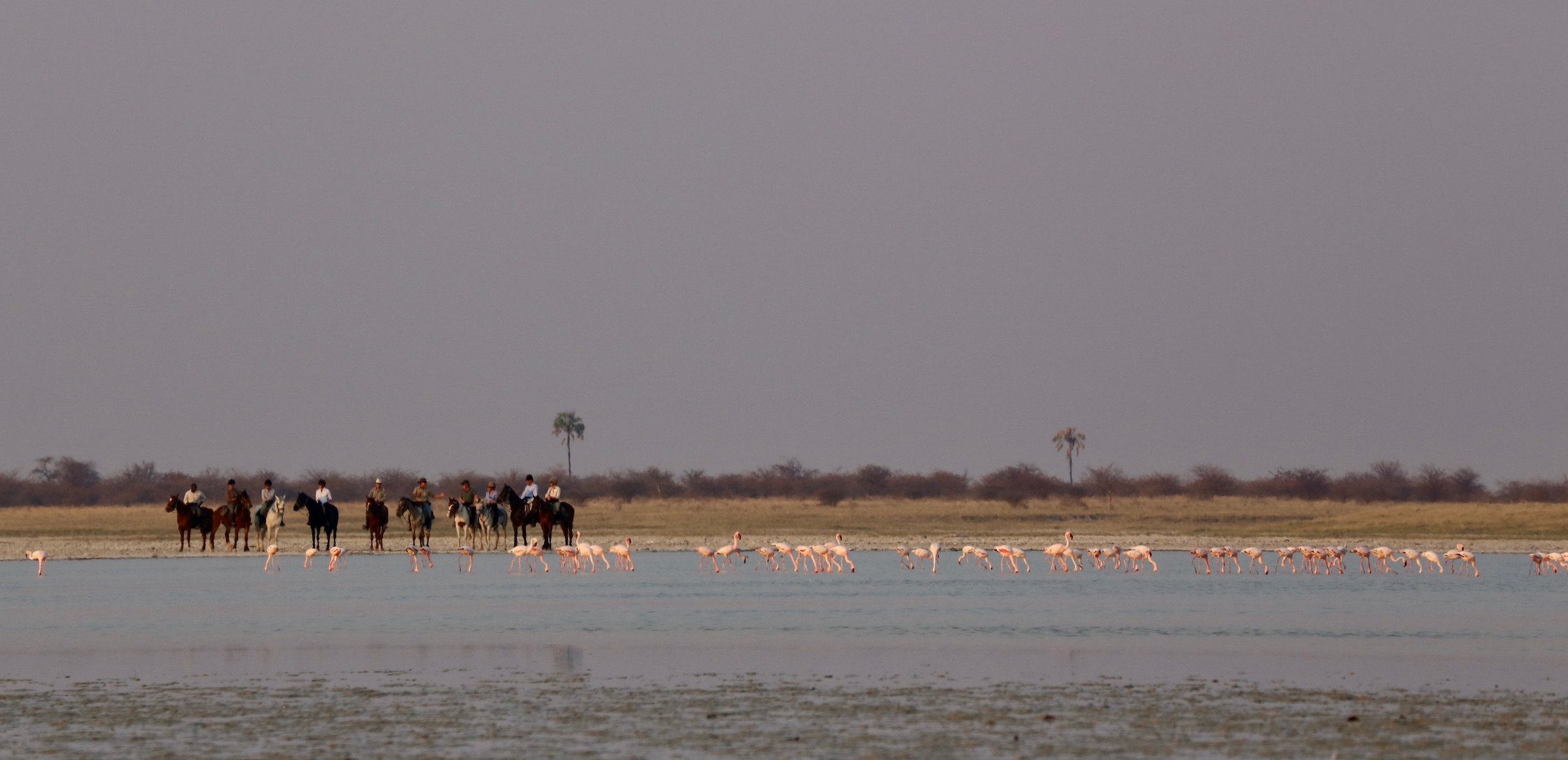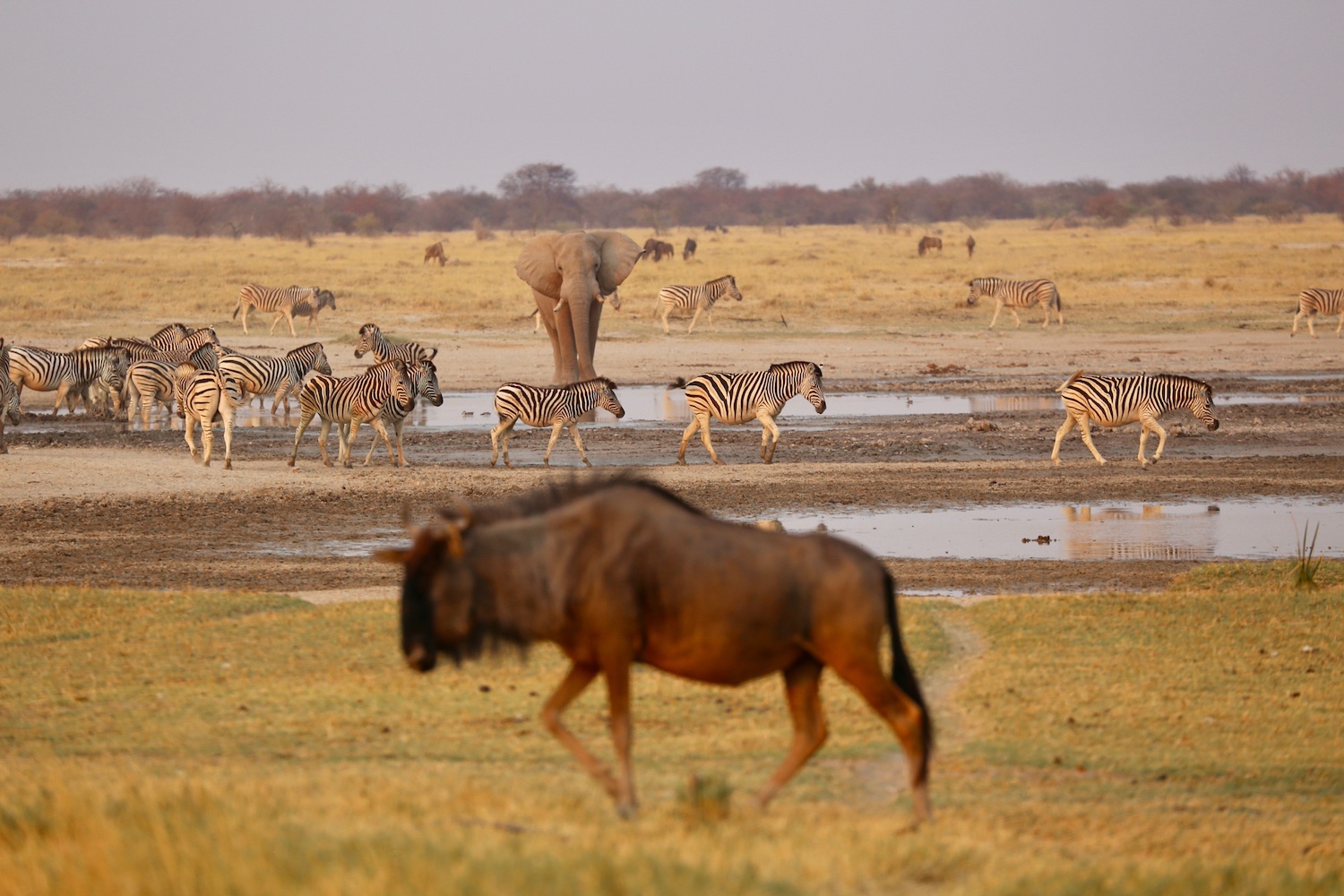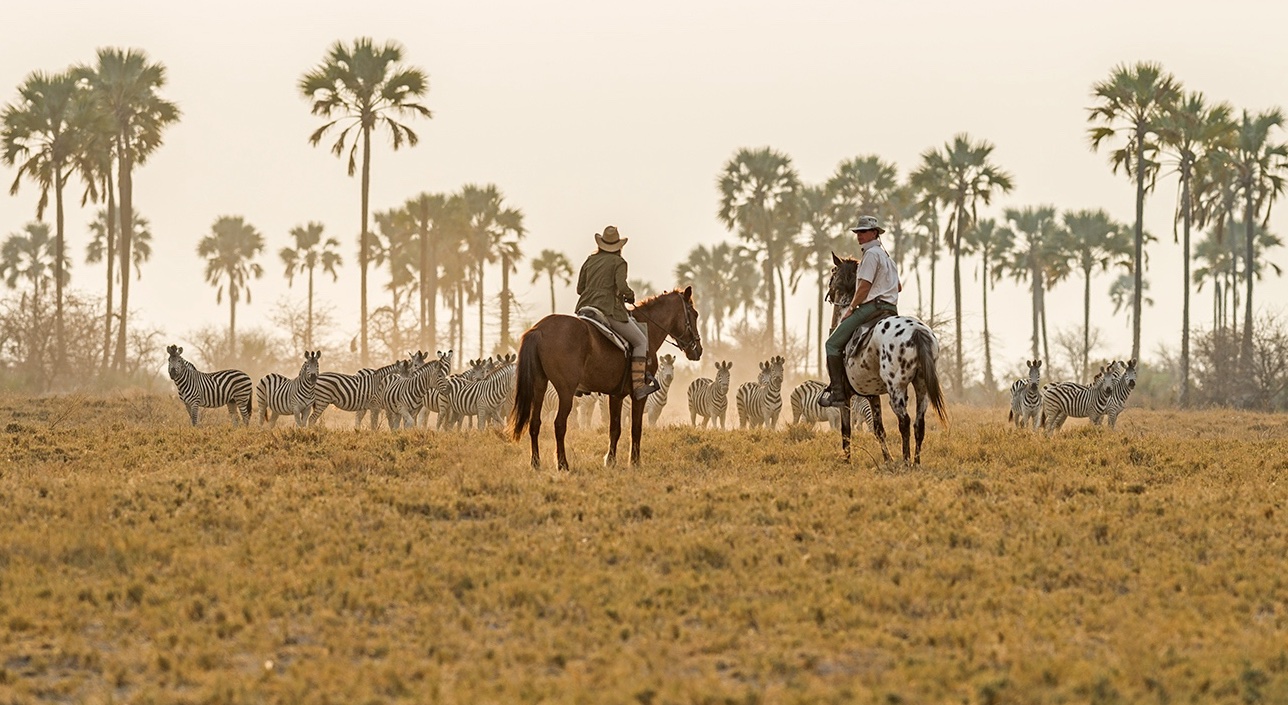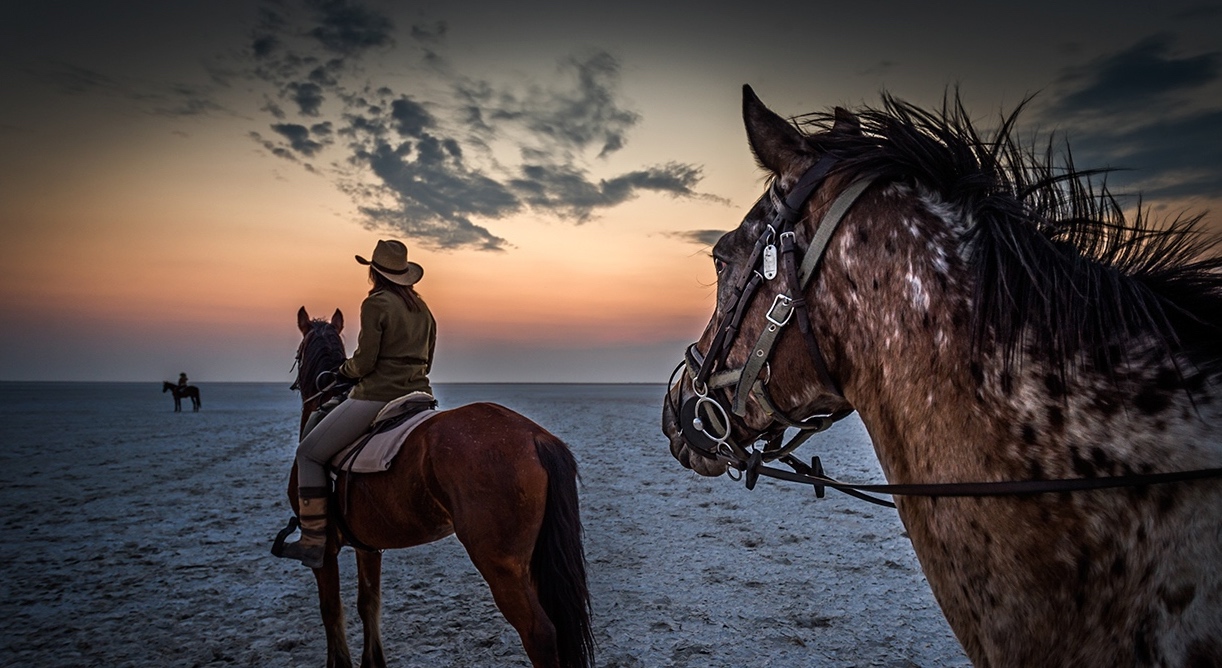Botswana Desert
Kalahari
The meadows of Botswana, in Kalahari, together with the salt pans of Makgadikgadi are places where the horses like to gallop with spirit and get lost among the dunes. Searching for the famous meerkats and trying to spot zebras, wildebeest, hares, hyenas, ostriches, ancient trees and native villages that we find on our way, all together, make it an unforgettable experience.
- Location
- Botswana
- Duration
- 6 Days / 5 Nights
- Season
- May - January
- Horses
- Cross breeds which include Shire/TB, Boerperd/TB, Friesian/BP, Arab crosses, Quarter horse crosses.
- The Riding
- 4 – 7 hours per day
Day by Day
Day 1 - Getting in tune with horses.
We start relaxed, either on foot or by a short sailing trip, we then travel by plane to the Makgadikgadi salt pans. The new camp is simple but comfortable: it has a straw-bale library, a living room and a pool to freshen up. In the afternoon, we go to an introductory ride to get in tune with our horses and take a look around the area. We then have dinner and put aside our horses, in a safe place, before lions get out to make their night round.
Day 2. Dunes and salt pans, ideal to go around on a horse and spot fauna.
At dawn, we have a light breakfast and have a long stroll over the morning through the “Land of the Thousand Island”. Stranded in the bed of the old lake, the sand dunes covered by palm trees are one of the most beautiful and fascinating places in the Botswana desert. The island and pastures nearby are loaded with zebras, wildebeest, hares and ostriches, and, of course, predators accompanying them. The mountains of salt among the island make it a great place to go around with our horses. In the afternoon, we return and find refuge under the shade to avoid the sun. We can use the pool. We then get out to spot the species typical from this arid area, such as gazelles and hyenas. At night, we get back in pickups in the middle of the night. The lanterns light the animals that cross over the road and that we cannot spot during daylight.
Day 3. Baobabs and the millenary origin.
Today we travel East, to the Xau Xai camp. We leave the salt pans and penetrate the mopan and acacia woods, next to the vast meadows that allow us to speed up and gallop towards the horizon. It is possible that we see Kudu along the way, and maybe some elephants. At lunch time, we reach the Baobab wood, called like that for its millenary and magnificent baobabs trees. We have lunch. If we really pay attention, we will find objects from the Stone age. This is not weird: after all, we are where humankind originated, the beginning of everything. We then continue our journey until we reach the camp, we rest there, lying on the floor, connecting with the star and nature.
Day 4. Searching for meerkats.
We get up to a steaming cup of coffee and prepare ourselves to go out in the search of meerkats. We go on foot given that this is a protected species. Meerkats are not docile by nature, but they got used to human contact. For instance, it is possible that on a cold day, one of them curl up against our body. We watch them interact between them, moving, controlling the environment. It is one of the most extraordinary experiences in Botswana. We get back to our horses and ride: we are now looking for zebras and ostriches that drink water from hidden wells. At sunset we take advantage of the outlook that extends upon us: 16 thousand km of savannah, vegetation, animals, sky and horizon.
Day 5. Return.
We pass by the salt pans, along the meadows. Our horses ask us to gallop with intensity, to look for areas where they can give free rein to their will. As the sun starts to go down on the horizon, and light starts to vanish, we make sure to stop in these places where a few days ago we discovered part of Africa. We can repeat the location twice, but never time, which moves forward at an even pace. And this is the way our horses are, feeling the need to move forward along the meadows. We reach the Kahari camp and relax beneath the stars.
Day 6. Native people and farewell.
Today we walk. We look for the Zu/’Hoasi community, an ancient tribe that tell us part of their history: we are taught how they have survived in this hostile environment, using their vast and ancient knowledge on plants, the behaviour of animas and their surviving skills. After lunch, we say goodbye Makgadikgadi and we return to Maun on a plane.

